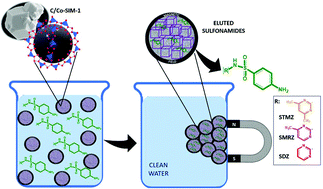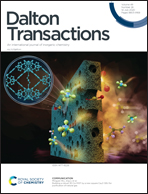Magnetic porous carbons derived from cobalt(ii)-based metal–organic frameworks for the solid-phase extraction of sulfonamides†
Abstract
In this work, the dispersive solid-phase extraction of sulfonamide antibiotics was evaluated using magnetic porous carbons derived from cobalt(II)-based metal–organic frameworks. By direct carbonization under the inert atmosphere of Co-SIM-1, Co-MOF-74 and Co-DABCO MOFs, different magnetic porous carbons were prepared and characterized to study their structural, morphological, chemical and textural properties. Their performance for the simultaneous extraction of three sulfonamides (sulfadiazine, sulfamerazine and sulfamethazine), prior to HPLC analysis, was also evaluated, obtaining the best results (>95%) in the case of C/Co-SIM-1 carbon, probably due to its bimodal pore structure, high surface area and large amount of surface defects. Using this adsorbent, the effect of the solution pH and contact time on the adsorption of the sulfonamides, and the reusability of the carbon were studied.

- This article is part of the themed collection: Celebrating recent chemical science in Mexico


 Please wait while we load your content...
Please wait while we load your content...